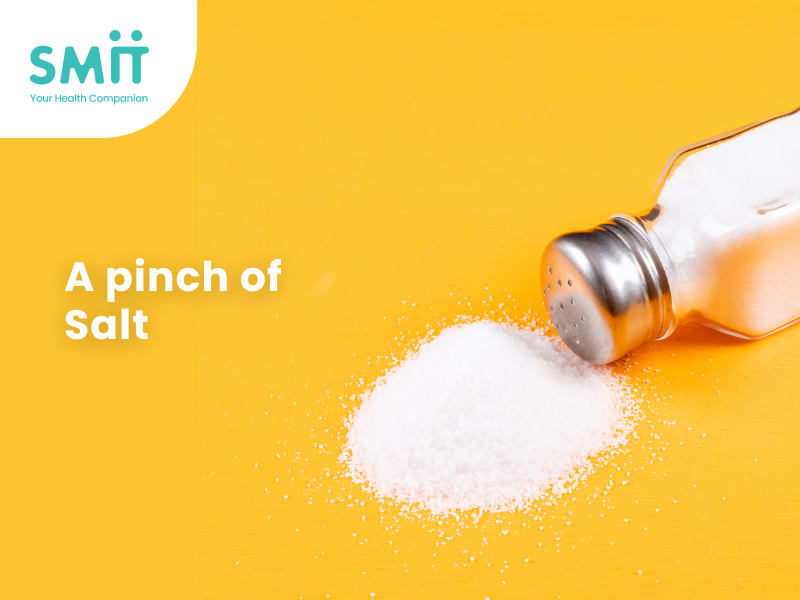Salt is an acquired taste that can be unlearned. It takes about 6-8 weeks to get used to eating food with less salt, but once done, it offers a bounty of health benefits.
What happens if you don’t?
1. Hypertension
2. Bloating and water retention
3. Increased calcium loss and bone demineralization
4. Higher risk of stroke, heart diseases, and kidney disorders
5. Higher possibility of weight gain
What happens if you do?
1. Consuming less than 5 grams of salt per day (for adults) helps manage hypertension
2. Reduces the risk of cardiovascular disease, strokes, and heart attacks
3. Reduces swelling and inflammation
4. Decreases the risk of kidney damage
5. Builds stronger bones
How does it work?
The best way to make it work is to avoid the Indian SALTY SIX which add extra sodium to our diet:
1. Baked products: Breads, biscuits, puffs, khari, buns etc.
2. Bottled and canned foods: Sauces, chutneys, salad dressing, canned fish, baked beans, fruit and vegetable juices
3. Instant and ready-to-cook foods: Noodles, pasta, cooking pastes, soups, pureed vegetables, curry pastes, breakfast cereals
4. Salted snacks: Chips, papads, bhel, chaat, bhujia, chakali, murukku, cheese, and pizzas
5. Frozen foods: Frozen cutlets, potato products, sausages, salami, bacon, kababs, frozen meals
6. Preserved foods: Pickles, papads, apalams, mangodi, sabudana papdi, jams, dried fish
Tricks
1. Always read the food labels on every product
2. Avoid keeping salt shakers and pickles on the dining table
3. Resist adding extra salt to salads, raitas, roti dough, and steamed rice
4. While ordering a take away or dining out, insist on foods being prepared without MSG (Ajinomoto)
5. Increase your intake of fresh fruits and vegetables
Our health management platform platform helps clients gain mastery over chronic lifestyle conditions such as diabetes, heart disease, and hypertension. We also help individuals improve their overall health, fitness, and immunity. Ready to live a fuller life? Take our health assessment!



0 Comments